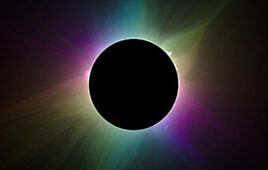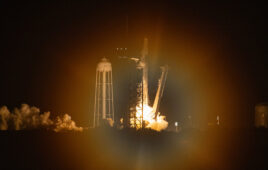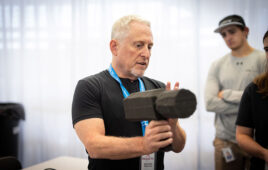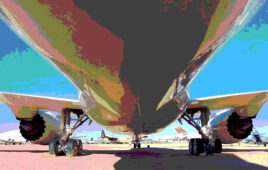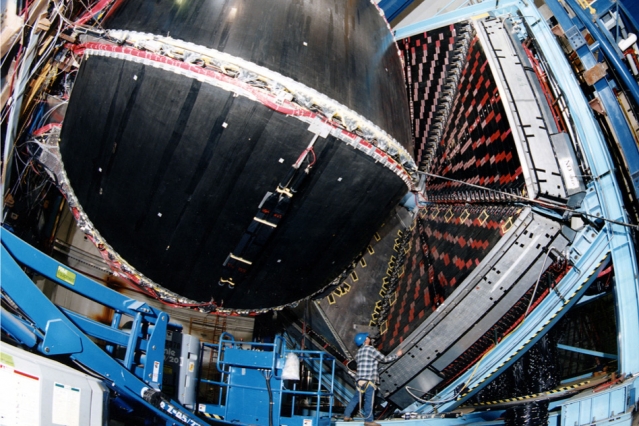
MIT researchers used archived data from the CLAS detector to study interactions in neutron-rich atoms. Courtesy of the researchers
Protons highly influence neutron stars, despite making up just 5 percent of their mass.
Researchers from the Massachusetts Institute of Technology (MIT) have found that some properties of neutron stars could be influenced by both their multitude of densely packed neutrons and by a substantially smaller fraction of protons.
Neutron stars—born out of gravitational collapse of extremely massive stars—are known as the smallest and densest stars in the universe. If a proton and neutron are close enough in distance, they will pair up and streak through an atom’s nucleus with unusually high energy.
The team was able to analyze the microscopic nuclei of atoms on Earth, where the nucleus of an atom is packed with protons and neutrons, but not as densely as in neutron stars in space. They looked for signs of proton and neutron pairs in atoms of carbon, aluminum, iron and lead. Each atom has a progressively higher ratio of neutrons to protons.
They found that the short-range correlations contribute significantly to the energy balance and overall properties of a given atomic nucleus.
The scientists discovered that as the relative number of neutrons in an atom increased, the probability that a proton would form an energetic pair also increased, while the likelihood that a neutron would pair up stayed about the same.
This discovery suggests that with objects with high densities, the minority protons carry a disproportionally large part of the average energy.
“We think that when you have a neutron-rich nucleus, on average, the protons move faster than the neutrons, so in some sense, protons carry the action,” study co-author Or Hen, an assistant professor of physics at MIT, said in a statement. “We can only imagine what might happen in even more neutron-dense objects like neutron stars.
“Even though protons are the minority in the star, we think the minority rules,” he added. “Protons seem to be very active, and we think they might determine several properties of the star.”
The study was based on data collected by the CEBAF (Continuous Electron Beam Accelerator Facility) Large Acceptance Spectrometer (CLAS), a particle accelerator and detector based at the Thomas Jefferson National Accelerator Facility in Virginia from 1998 and 2012.
“Having this property of a detector that sees everything and also keeps everything for offline analysis is extremely rare,” Hen said. “It even has kept what people considered ‘noise,’ and we’re now learning that one person’s noise is another person’s signal.”
In the reanalysis of data collected in 2004, the researchers studied for signs of high-energy protons and neutrons—indicating that the particles had paired up—and whether the probability of the pairing changed the ratio of neutrons to protons increased.
“We wanted to start from a symmetric nucleus and see, as we add more neutrons, how things evolve,” Hen said. “We would never get to the symmetries of neutron stars here on Earth, but we could at least see some trend and understand from that, what could be going on in the star.”
According to Hen, energetic protons in neutron-rich atoms could possibly extend to even more neutron-dense objects like neutron stars.
“All these properties then affect how two neutron stars merge together, which we think is one of the main processes in the universe that create nuclei heavier than iron, such as gold,” Hen said. “Now that we know the small fraction of protons in the star are very highly correlated, we will have to rethink how [neutron stars] behave.”
The study was published in Nature.

